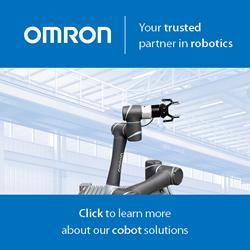BitFlow and Advantech to Demonstrate Integrated AI Systems at VISION Show in Stuttgart
At VISION, BitFlow’s focus will be showcasing opportunities in artificial intelligence, embedded vision, and fiber-based network connectivity made possible by the convergence of BitFlow and Advantech technologies.
WOBURN, MA, SEPTEMBER 6, 2024 -- BitFlow, a leading innovator of frame grabbers and a brand of Advantech, Inc., announced today that it will be exhibiting within the Adventech Europe booth (#8D12, Hall 8) at the upcoming VISION Show in Stuttgart, Germany, October 8-10, 2024. At VISION, BitFlow's focus will be showcasing opportunities in artificial intelligence, embedded vision, and fiber-based network connectivity made possible by the convergence of BitFlow and Advantech technologies.
"We are excited to demonstrate solutions at VISION that merge BitFlow's ultra-fast data acquisition with Advantech's AI processing to create powerful yet highly flexible computing toolsets," explained Donal Waide, Director of Business Development for Advantech's Industrial Cloud & Video Group. "Together, BitFlow and Advantech are helping enterprises better detect product defects, map patterns, and identify anomalies indicating potential gaps in quality control, process efficiencies or security, and even in biomechanics to enhance athletic performance."
POSE ESTIMATION
One AI application BitFlow and Advantech will be highlighting at VISION is Pose Estimation, a machine learning technique that tracks the position of a person's body within an image. Pose Estimation assists physicians with diagnosis and rehabilitation therapy, among other uses.
Running NVIDIA AI models, the Advantech MIC-733-AO Edge Generative AI System will automatically analyze body posture, gait and poses using images being captured in real-time by a CoaXPress-over-Fiber (CoF) camera and a BitFlow Claxon Fiber CoF frame grabber, resulting in unprecedented data rates of 50 Gigabytes per second (Gb/s) and 500 frames-per-second (fps). This compares favorably with USB, GigE and other mainstream cameras that top out at 10 Gb/s and 25 fps when integrated with an NVIDIA Jetson platform. Mainstream cameras like these also rely on host resources to move and manage images going into GPU memory, adding latencies and consuming CPU resources.
Although industrial applications may not require these extremely high data rates, the same Post Estimation algorithm is suitable for tasks such as analyzing soft body objects handled by a robot or in human-robot interactions. In addition, the engine could be trained on large crowds, allowing for detection of errant behavior that may indicate a security threat.
DIRECT MEMORY ACCESS
BitFlow frame grabbers have their own Direct Memory Access (DMA) engines, enabling the boards to transmit images directly into GPU memory without any need for CPU resources. DMA frees up the CPU for processing and other traffic control needs, on both PC and embedded systems like the Jetson. Because the image is not buffered at any point along the capture chain, it also reduces exposure to processing latencies. In other words, the first pixel is routed straight to processing memory as soon as it exits the camera.
COAXPRESS OVER FIBER
Over the past decade, fiber optics in data transmission systems has increased because of fiber's many critical advantages, including electrical isolation, long-range point-to-point connectivity, and high data rate capabilities. To support this trend, Advantech has been a leader in supplying the market with a range of fiber devices, including transmitters, receivers, transceivers, media converters and much more.
At VISION, Advantech and BitFlow will be showcasing the groundbreaking new BitFlow Claxon Fiber frame grabber. Rather than coaxial cable and BNC connectors, the Claxon Fiber supports QFSP+ compatible fiber assemblies and low-cost, off the shelf standard fiber optic cable in distances over a kilometer without loss in speed. Live demonstrations will be held at the booth with Optronis CycloneFiber-5M camera running at a top speed of 600 fps.
Featured Product

